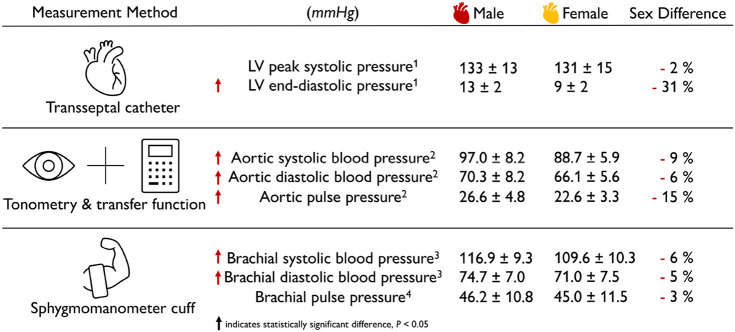Table 3.
Sex differences in healthy blood pressure.
Sex differences between female and male blood pressures in percent, with the male heart as the baseline. With the use of the transseptal catheter, the most invasive blood pressure measuring technique, the male heart is shown to have significantly greater end-diastolic pressure than the female heart, there was no significant difference for systolic pressure. With less invasive techniques, the differences between male and female blood pressure were between 5–15%, with the male pressure always greater than the female. Negative values in red indicate that the female parameter is smaller; arrows indicate reported statistically significant differences; quantitative data are represented as mean absolute value ± SD; [1] Villari et al. (1995); [2] Doonan et al. (2013); [3] Vasan et al. (1997); [4] Avolio et al. (2018).

